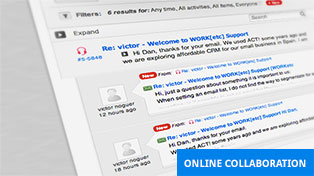Register now or log in to join your professional community.

The first step is to estimate how investing in a CRM solution will help grow revenues, cut operating costs, and boost IT efficiencies:
On the cost side of the equation, estimate the costs of software, deployment, maintenance, and support:
Measuring the ROI of CRM can be difficult without any historical data.
To measure CRM ROI you need to take into account the cost of the software, training costs, maintenance costs, costs to migrate the system, and the time it takes your development team to get it up and running.
To measure if your performance has improved, you need to look at the time it saves your employees to update the system, and you can look at increases in sales, better customer satisfaction, and better performance from marketing campaigns.
By comparing your performance metrics and overhead costs from before you implemented the CRM and after, you’ll be able to see if you’re getting a good ROI from your CRM. You can find a spreadsheet here and a web tool here to help you calculate your CRM ROI.
OTHER FEATURES THAT CAN IMPROVE CRM ROIIf you’re looking to get a greater ROI from CRM, then you may want to consider a multi-purpose CRM solution that includes other features such as accounting and project management. You’ll be able to cut the costs of other solutions and increase productivity even more by being able to manage every aspect of your business from a single location.
CRM is so useful because it can be easily implemented into any business and can be used in any aspect of that business. One of the reasons for this is that good CRM services recognize how difficult tasks can be within a business and they create their software to be as user-friendly and efficient as possible.
HOW CAN YOU GET A GOOD CRM ROI THAT HELPS YOUR BUSINESS TO INCREASE PROFITS? HERE ARE A FEW OF THE WAYS:


These are just a few of the ways in which using CRM can help a business to increase profits. But their overhead can be drastically reduced by just by paying for one software program and through increased efficiency that using such a program brings. Employees will no longer waste time juggling between different software applications, they can do everything to one single easy to use and easy to manage solution.
Now that you can see just how easy it is to increase profits and reduce overheads it should be time to use a CRM solution.

No matter how good the processes, people or intentions, no store can get it right 100% of the time. If you’re in business, customer concerns are a fact of life. But the cost of issues that leave customers dissatisfied is huge.The customer doesn’t expect us to be perfect. They do expect us to fix things when they go wrong. This is where CRM become handy to address the concerns promptly. This result in retention of the customers and these customers can be identified, measured the satisfaction level after the concerns addressed and that is what Return on Investment for CRM. Yes! Customer is profit when everything else is overheads.

THE IMPORTANCE OF ROI All businesses value their bottom line and are all concerned about their overhead costs. It doesn’t matter how much revenue you’re generating if you’re overhead costs are cutting into the profits. MEASURING CRM ROI Measuring the ROI of CRM can be difficult without any historical data. To measure CRM ROI you need to take into account the cost of the software, training costs, maintenance costs, costs to migrate the system, and the time it takes your development team to get it up and running. To measure if your performance has improved, you need to look at the time it saves your employees to update the system, and you can look at increases in sales, better customer satisfaction, and better performance from marketing campaigns. By comparing your performance metrics and overhead costs from before you implemented the CRM and after, you’ll be able to see if you’re getting a good ROI from your CRM. You can find a spreadsheet here and a web tool here to help you calculate your CRM ROI. OTHER FEATURES THAT CAN IMPROVE CRM ROI If you’re looking to get a greater ROI from CRM, then you may want to consider a multi-purpose CRM solution that includes other features such as accounting and project management. You’ll be able to cut the costs of other solutions and increase productivity even more by being able to manage every aspect of your business from a single location. CRM is so useful because it can be easily implemented into any business and can be used in any aspect of that business. One of the reasons for this is that good CRM services recognize how difficult tasks can be within a business and they create their software to be as user-friendly and efficient as possible.

I agree with mr. Vaiyapuri's submission regarding ROI of CRM. However; it is important to note that CRM must be effectively, efficiently & strategically aligned to the organisation's goals & objectives in order to maximize RIO.
Thanx for the invitation

Thanks for the invite ............................ agreed with Mr. answers through SHAHZAD Yaqoob



